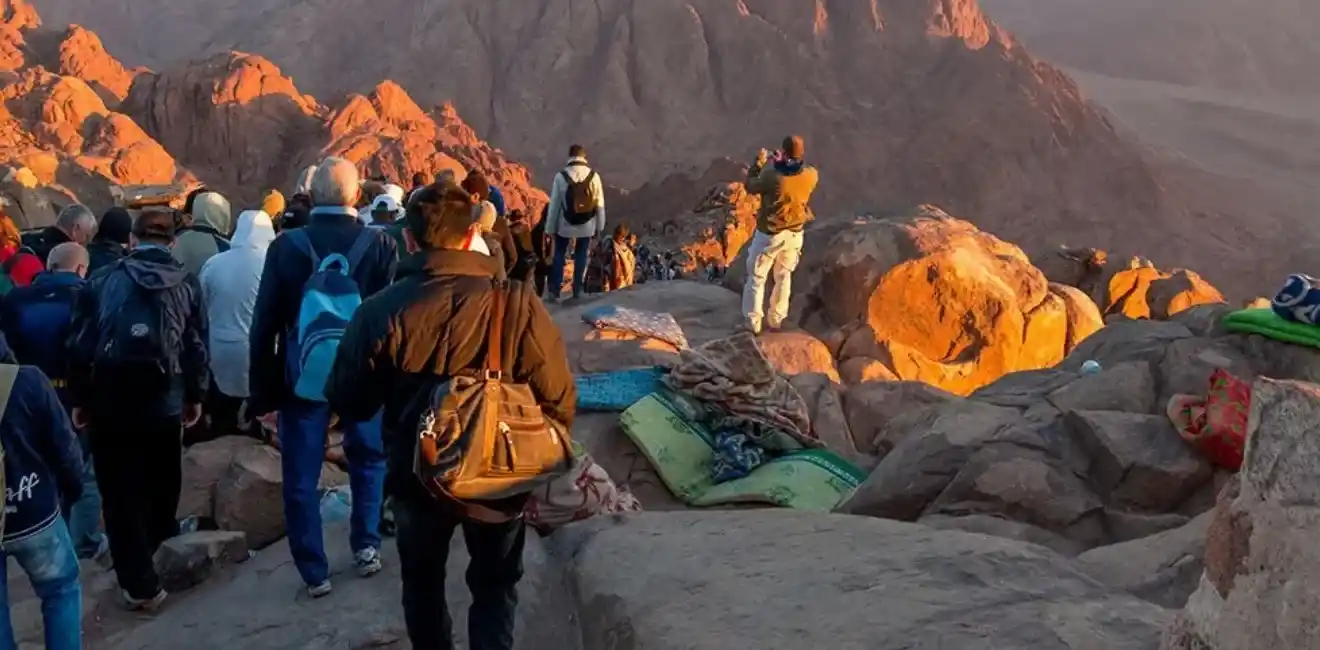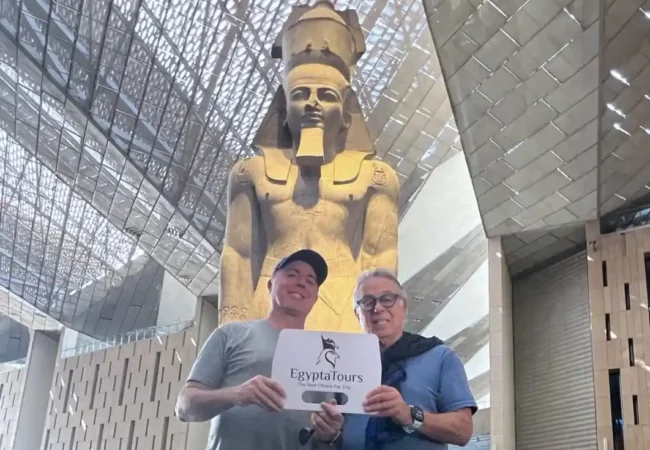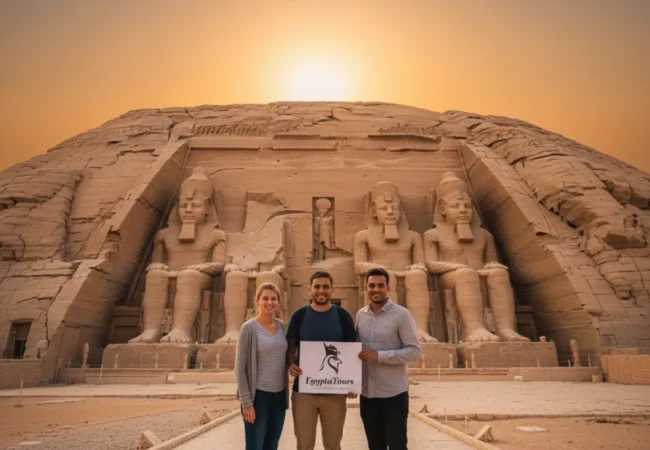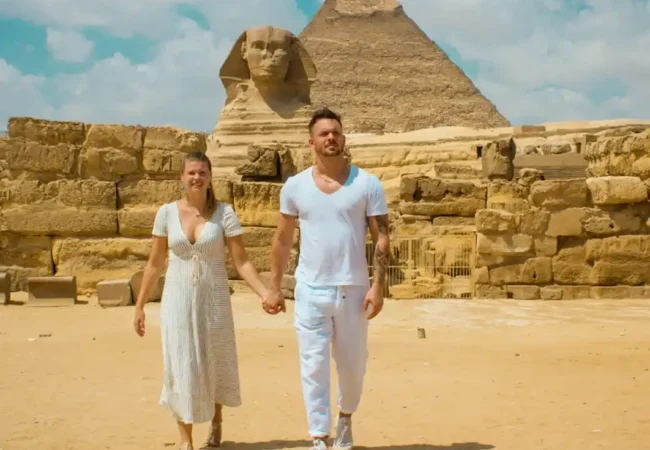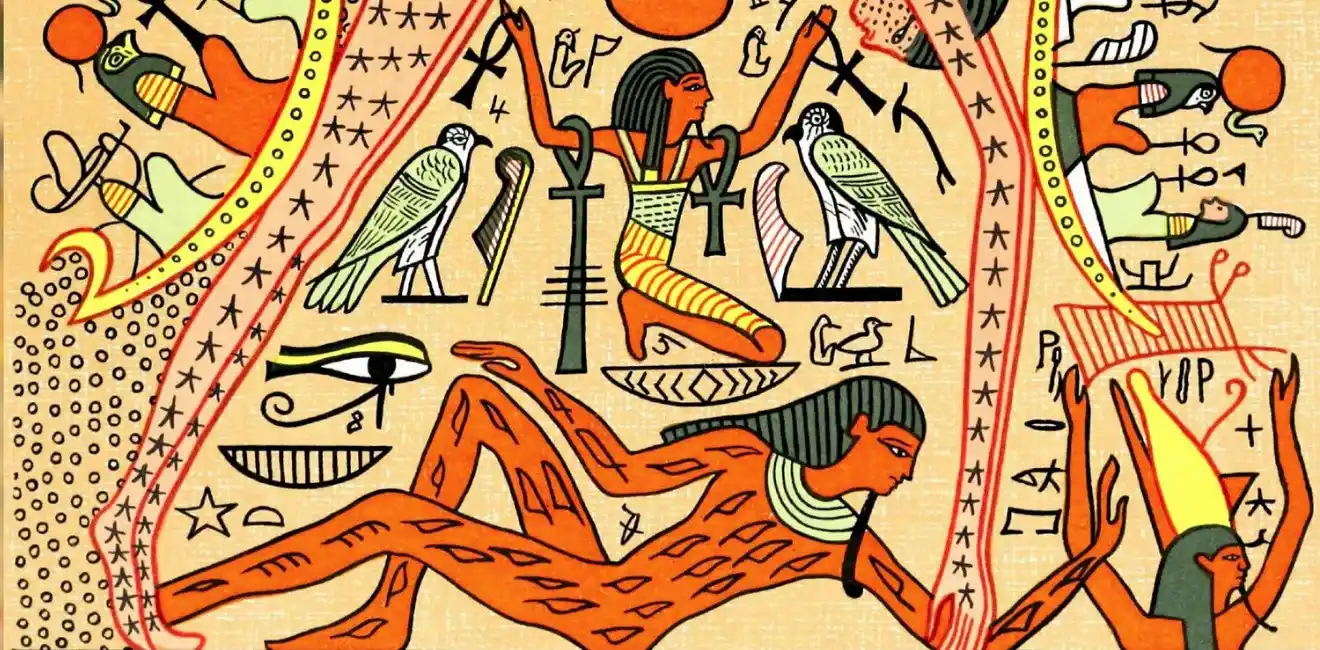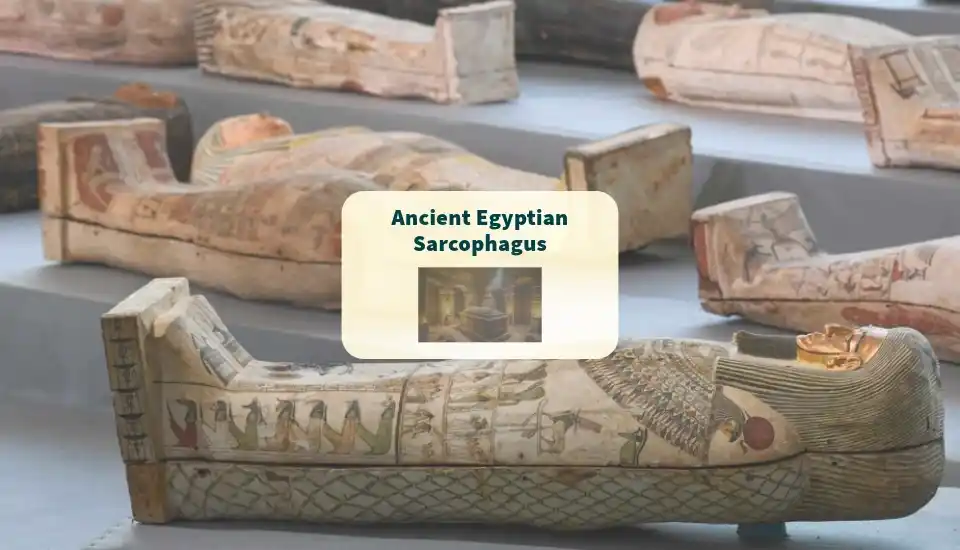
Discover the Mysteries of Ancient Egyptian Sarcophagus: History, Significance, and Facts
The ancient Egyptian civilization is one of the most important civilizations in the history of the world, and this civilization was distinguished by creativity in many different fields, whether in agriculture, industry, art or religion, and this reflects the culture of the ancient Egyptians,
This civilization was distinguished by many important symbols, the most important of which is the ancient Egyptian Sarcophagus and coffin, which is a symbol of eternal life after death for the ancient Egyptians.
This coffin was associated with the beliefs of the ancient Egyptians about resurrection after death and the existence of another life.
In this article, we will talk about the materials and decorations from which the Ancient Egyptian Sarcophagus was made.
The history of the ancient Egyptian Sarcophagus dates back to the pre-Christian era, dating back to about 664 BC, and was discovered in many ancient Egyptian cities.
At that time, it was made of some copper materials and some shapes such as the Great and snakes were placed on the outer surface of the coffin.
This coffin was made to preserve and secure the bodies after death to prevent the theft of the bodies.
It developed over time until it was made of other materials such as wood, stone or granite.
It was decorated with many decorations according to the social and material status of the deceased.
The coffins of the poor contained buried bodies inside them, while the coffins of the rich contained small gold pieces and gold sheets and many treasures inside them.
Some materials found inside ancient Egyptian Sarcophagus are still being discovered to reveal the presence of some skulls of some animals, some of which contain snakes topped with a crown, and it is believed that this drawing in that era refers to the ancient Egyptian god Aton.
Some skulls of wall lizards and fragments of bones of some other animals wrapped in pieces of linen cloth were also discovered.
Due to the difficulty of opening these coffins, some modern technological methods were used to detect the materials inside them, such as neutron tomography, which is not affected by searching inside metals.
Due to the absence of this type of imaging, these coffins remained hidden for thousands of years.
The ancient Egyptians interest in the coffin to preserve the body of the dead arose after the idea of mummification for the purpose of protecting it.
At the beginning of its manufacture, it took an oval shape, then it was made in square shapes starting from the first or second dynasty, and the wealthy class used to place their coffins inside other large coffins made of granite.
Types of Ancient Egyptian Sarcophagus
The ancient Egyptian Sarcophagus were made in many types according to the economic and social differences in this period.
The most important of these types are:
- Wooden coffins, these coffins were used in the early ages and were made of pine, cedar or acacia wood.
- Stone coffins were used after the use of wooden coffins for a period, and stone coffins are characterized by their ability to protect bodies from external factors such as wind, rain, sun, etc.
- Coffins were made of panels, either wooden or stone panels, and these coffins were made so that they could be installed easily.
- Canopic coffins, these coffins were made to preserve the internal organs of the dead, and they were also used in mummification.
Symbols and decorations used in coffins
Many decorations and symbols used for decoration in ancient Egypt appeared on the ancient Egyptian Sarcophagus, and these symbols carry many cultures and religious connotations, including some natural scenes such as plants and flowers, and at that time they symbolized eternal life and fertility.
There are hieroglyphic writings, which are the name and title of the deceased written in hieroglyphics.
Some spells were also written to protect the dead in the afterlife, as the ancient Egyptians believed at that time.
There are some coffins on which some gods were drawn, such as the god Anubis, who was the protector of the dead at that time.
The ancient Egyptians decorated these coffins by using some colored materials or by carving on the coffin to form the face, hand, beard and hair, The ancient Egyptians inlaid the coffin with some precious stones and some glass pastes.
The wealthy class inlaid the coffin with some gold pieces.
The ancient Egyptians used limestone powder to prepare the surface and bottom of the coffin, and a percentage of water and glue were added to it to form a paste that Capitano used to cover the defects inside the coffin and make it smooth to protect the dead when they woke up in the afterlife.
The importance of Ancient Egyptian Sarcophagus as a religious belief
The ancient Egyptians cared about coffins because they played a pivotal role in the religious beliefs of the ancient Egyptians, They believed that the soul needed a safe place to protect it and rest after death.
These coffins were like the souls of the ancient Egyptians to continue in eternal life.
The Egyptians performed some religious rituals while burying the coffin.
They also buried some personal tools and some jewelry of the deceased to help his soul during the transition to the afterlife.
At the end of this article, we have learned with you about Ancient Egyptian Sarcophagus, which is considered a profound symbol of eternal life after death for the ancient Egyptians.
It reflects their artistic and religious culture, The ancient Egyptian civilization was one of the greatest civilizations at that time, Through it, we learned about the ancient Egyptians’ view of death and the afterlife.
The ancient Egyptian Sarcophagus is an embodiment of a whole world of ideas that existed among the ancient Egyptians.
It combines mortality and immortality, We hope that you like this article.
In ancient Egypt, sarcophagus were elaborately carved stone coffins used to protect the mummified body of the deceased.
The tradition of using a stone sarcophagus dates back to the 3rd Dynasty, with some of the earliest stone sarcophagi made from materials like limestone.
The word “sarcophagus” comes from ancient Greek, meaning “flesh-eating stone,” though the practice spread beyond Egypt to other ancient civilizations like Rome and Greece.
King Tut tomb, for example, contained a finely crafted stone sarcophagus, demonstrating the wealth and skill of Egyptian artisans.
These stone coffins were essential in ensuring the deceased’s safe journey to the afterlife.
The ancient Egyptian sarcophagus, whose name comes from the Greek word meaning “flesh-eating stone,” refers to a type of limestone once found in the region around Troy.
The literal translation reflects early beliefs about how the stone interacted with the body.
These elaborately decorated coffins were placed inside the burial chamber of tombs to protect and honor the deceased.
Today, many sarcophagi are preserved in museums around the world, including in New York City, where they continue to fascinate with their art and symbolism.
The Metropolitan Museum of Art houses remarkable examples of Roman sarcophagi dating to the 2nd–4th centuries. The intricate carvings on the sides of the sarcophagus often depict mythological scenes, battles, or symbolic motifs that reflected beliefs about the afterlife. These masterpieces showcase the artistic skill and cultural values of the Roman world, blending beauty with funerary tradition.
Ancient Egyptian Sarcophagi: Your Top Questions Answered
What exactly is a sarcophagus?
A sarcophagus is a stone coffin, often decorated with inscriptions and carvings, used to bury the dead, especially in ancient Egypt. It protected the body and helped guide the soul to the afterlife.
Why were sarcophagi so important to the ancient Egyptians?
They believed the body had to be preserved for the afterlife. The sarcophagus shielded the mummy from damage, and the carvings and texts on it protected and helped the soul on its journey.
What materials were used to make sarcophagi?
Mostly stone like limestone, granite, or basalt. Some sarcophagi were made from wood and then painted or gilded. The choice depended on the individual’s wealth and status.
How did the design of a sarcophagus reflect its owner?
The richer the person, the more elaborate the sarcophagus. Pharaohs had large, detailed sarcophagi with hieroglyphs and images of gods, while commoners had simpler ones.
What kind of decorations did they have?
Common decorations included hieroglyphs, spells from the Book of the Dead, portraits of the deceased, and protective symbols. These aimed to protect and empower the dead in the afterlife.
Were sarcophagi always used inside tombs?
Yes, sarcophagi were placed inside tombs or burial chambers. Often, there were multiple nested coffins inside the sarcophagus to add extra layers of protection.
How old are the oldest known Egyptian sarcophagi?
The earliest date back to around 3000 BCE, from the early dynastic period of Egypt. They evolved over time to become more detailed and symbolic.
Did sarcophagi only hold mummies?
Mostly, yes. They held the embalmed bodies of the dead, whether kings, nobles, or sometimes animals.
Can sarcophagi tell us about ancient Egyptian beliefs?
Absolutely. The inscriptions and images reveal their views on death, the afterlife, and their gods, shedding light on their spiritual world.
How do historians date and study sarcophagi?
Experts look at stylistic features, inscriptions, and the materials used. They also consider the tomb’s location and artifacts found nearby.
Are all sarcophagi found intact?
No. Many were damaged, looted, or broken over thousands of years. Some were stripped of valuables but still offer valuable clues.
Where can you see ancient Egyptian sarcophagi today?
Museums worldwide hold them, with Egypt’s Cairo Museum and the British Museum being notable. Some remain in their original tombs in Egypt.
Can anyone own a sarcophagus?
Due to their historical value and legal protections, sarcophagi are usually museum pieces, not private property.
How do modern archaeologists protect sarcophagi?
They handle them carefully to prevent damage, use climate-controlled storage, and document every detail through photos and scans.
What role did sarcophagi play in Egyptian funerary rituals?
They were central, acting as the final resting place. Priests performed rites near them to ensure safe passage into the afterlife.

